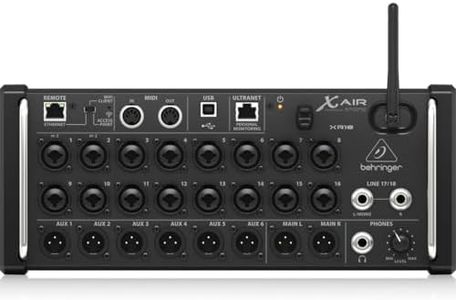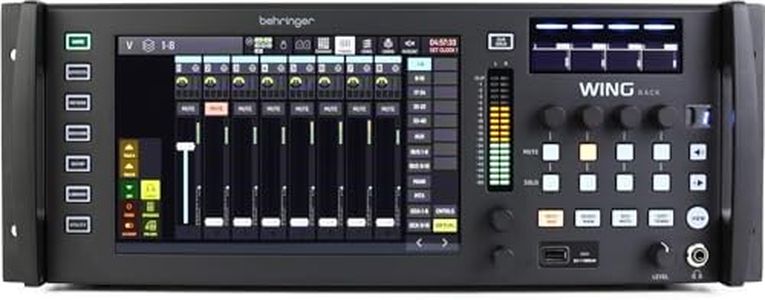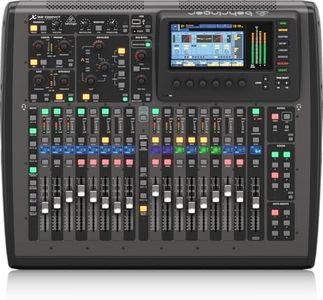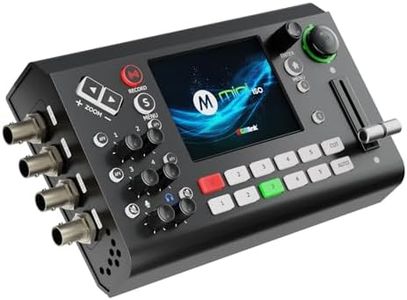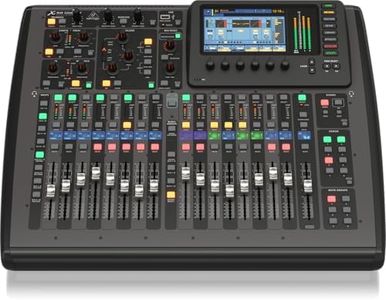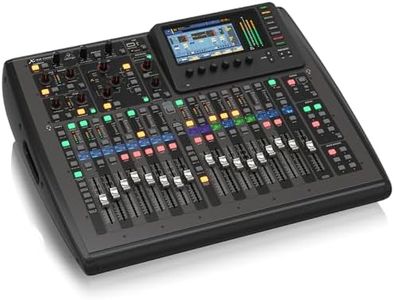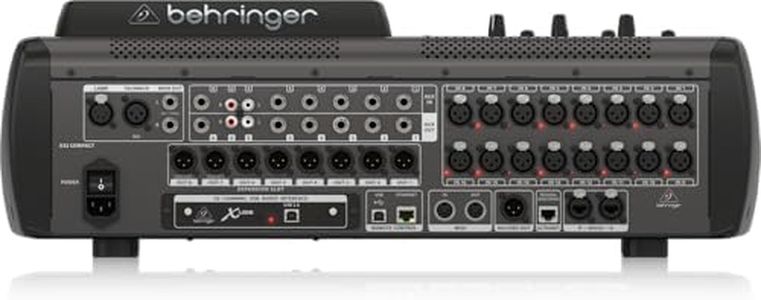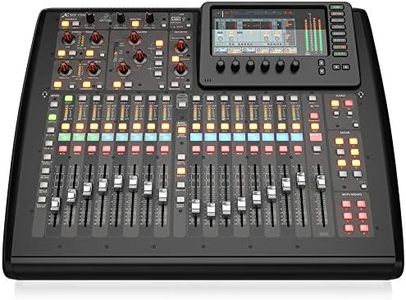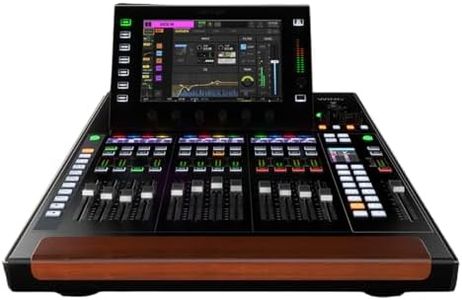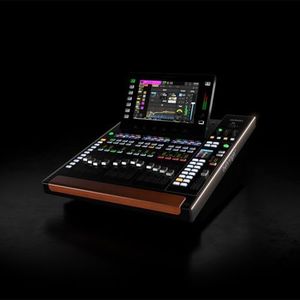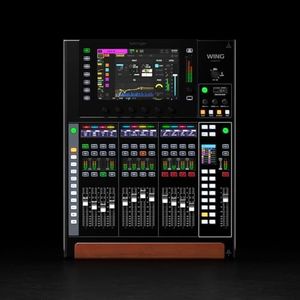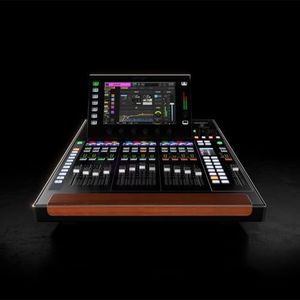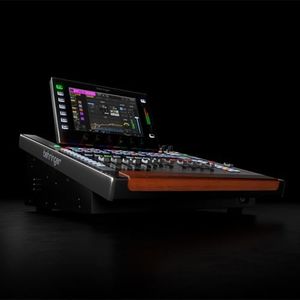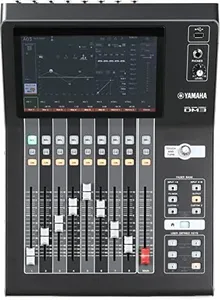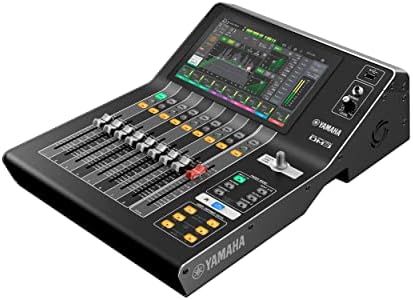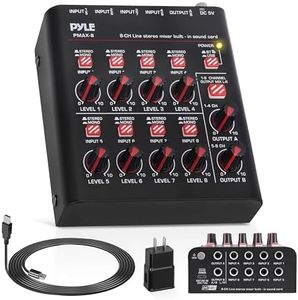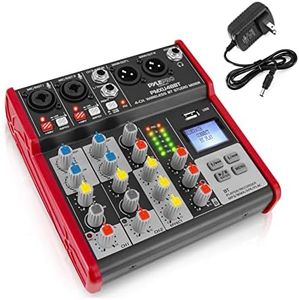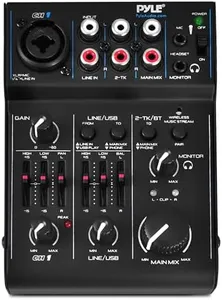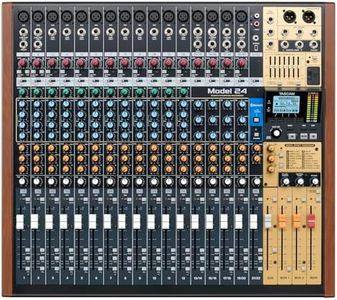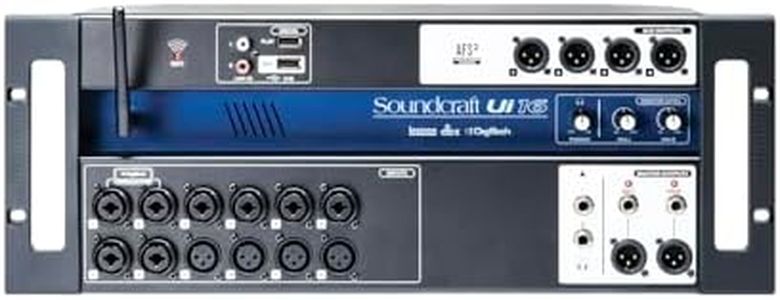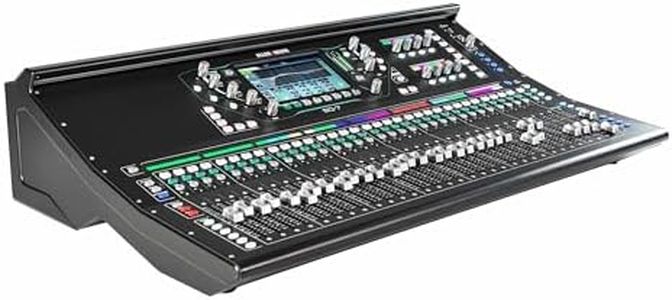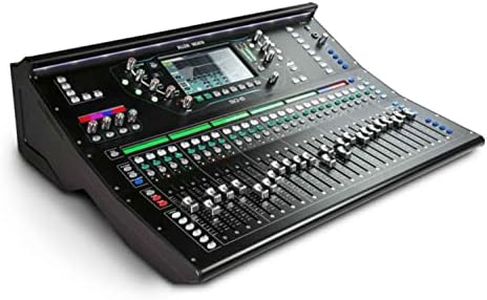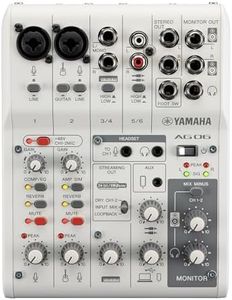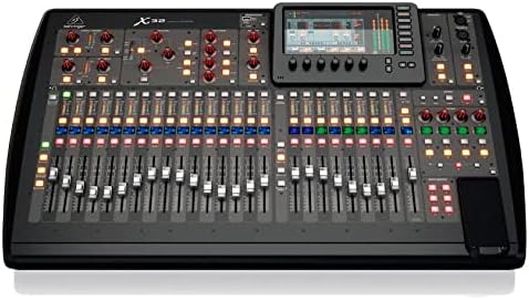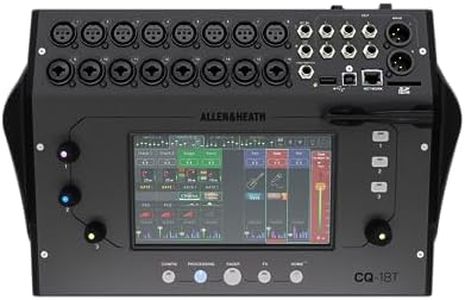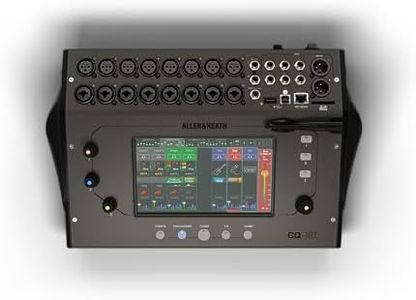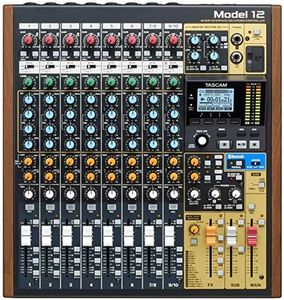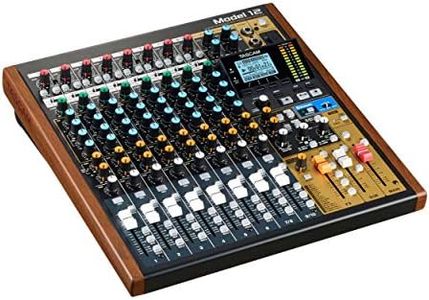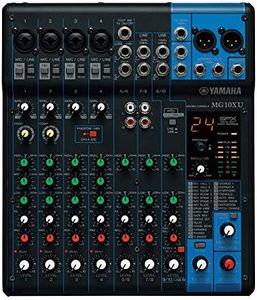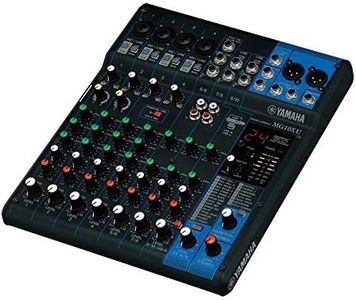10 Best Digital Mixers 2025 in the United States
Winner
Behringer XAir XR18 18-Channel 12-Bus Wireless Digital Mixer for iPad/Android Tablet
The Behringer XAir XR18 digital mixer is a versatile choice for those needing a high number of channels and strong connectivity options. With 18 channels and 16 Midas-designed mic preamps, it delivers excellent sound quality and is suitable for both studio and live applications. The built-in tri-mode WiFi router simplifies setup, eliminating the need for external routers, and the mixer can be controlled via an iPad or Android tablet, making the user interface flexible and mobile-friendly.
Most important from
729 reviews
Behringer WING Rack 48-channel Digital Mixer
The Behringer WING Rack is a powerful 48-channel digital mixer well-suited for users who need extensive input capacity and flexibility in a rackmount form. With 48 stereo channels and 24 high-quality Midas Pro preamps, it offers excellent sound input options for live performances or studio setups. The mixer includes 16 stereo digital effects, providing a good range of built-in processing without needing extra gear. Its 48-in/48-out USB audio interface is a strong point, allowing smooth multi-track recording and easy integration with digital audio workstations. The large touchscreen user interface makes navigation and control straightforward, even for those less familiar with digital mixers.
Most important from
6 reviews
Behringer X32 Compact Digital Mixer
The Behringer X32 Compact Digital Mixer boasts a range of features that make it a strong contender in the digital mixer market. With 40 input channels and 16 programmable mic preamps, it offers ample space and customization for various audio setups. The 25 total buses and 17 motorized faders enhance its flexibility, making it suitable for complex mixing tasks.
Top 10 Best Digital Mixers 2025 in the United States
Winner
Behringer XAir XR18 18-Channel 12-Bus Wireless Digital Mixer for iPad/Android Tablet
Behringer XAir XR18 18-Channel 12-Bus Wireless Digital Mixer for iPad/Android Tablet
Chosen by 1460 this week
Behringer WING Rack 48-channel Digital Mixer
Behringer WING Rack 48-channel Digital Mixer
Behringer X32 Compact Digital Mixer
Behringer X32 Compact Digital Mixer
Behringer WING Compact 48-channel Digital Mixer
Behringer WING Compact 48-channel Digital Mixer
Yamaha DM3 Standard 22 Channel Ultracompact Digital Mixing Console
Yamaha DM3 Standard 22 Channel Ultracompact Digital Mixing Console
Behringer X32 Digital Mixer
Behringer X32 Digital Mixer
Allen & Heath CQ-18T Digital Mixer with 7" Touchscreen WiFi and Bluetooth Connectivity
Allen & Heath CQ-18T Digital Mixer with 7" Touchscreen WiFi and Bluetooth Connectivity
Behringer X32 Rack Digital Mixer
Behringer X32 Rack Digital Mixer
Tascam Model 12 All-in-One 12-track Digital Multitrack Mixing and Recording Studio, Mixer, USB Audio Interface and DAW Controller
Tascam Model 12 All-in-One 12-track Digital Multitrack Mixing and Recording Studio, Mixer, USB Audio Interface and DAW Controller
Our technology thoroughly searches through the online shopping world, reviewing hundreds of sites. We then process and analyze this information, updating in real-time to bring you the latest top-rated products. This way, you always get the best and most current options available.

